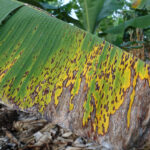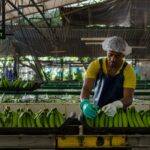Are bananas going extinct?

For 40 years, the Cavendish variety has been the most widely available banana in the world. Bred for its disease-resistant qualities, Cavendish bananas were once the solution to the first Fusarium TR4 (Foc TR4) fungus outbreak in the 50s.
Commonly signaled out as the industry’s biggest foe, the fungus has a confirmed presence in 20 Latin American countries. Also called Fusarium wilt or Panama disease, it triggers the self-defense mechanisms of the host plant causing the secretion of a gel.
This is followed by the formation of a balloon-like protrusion, known as tylose, which blocks the movement of water and nutrients to the upper parts of the plant. This causes an overall health decline, ultimately killing the banana plant.
However, thanks to recent research from an international team of scientists led by the University of Massachusetts Amherst, it was confirmed that Foc TR4 did not evolve from the strain that wiped out commercial banana crops in the 50s and that the virulence of this new strain seems to be caused by some accessory genes that are associated the production of nitric oxide.
The research, published in Nature Microbiology, opens the door to treatments and strategies that can slow, if not control, the as-of-yet unchecked spread of Foc TR4.
To arrive at this conclusion, the scientists sequenced and compared 36 different Foc TR4 strains collected from all over the world.
“Identifying these accessory genetic sequences opens up many strategic avenues to mitigate or even control, the spread of Foc TR4,” said lead author Yong Zhang.
Related articles: LatAm banana industry fighting Fusarium RT4












































